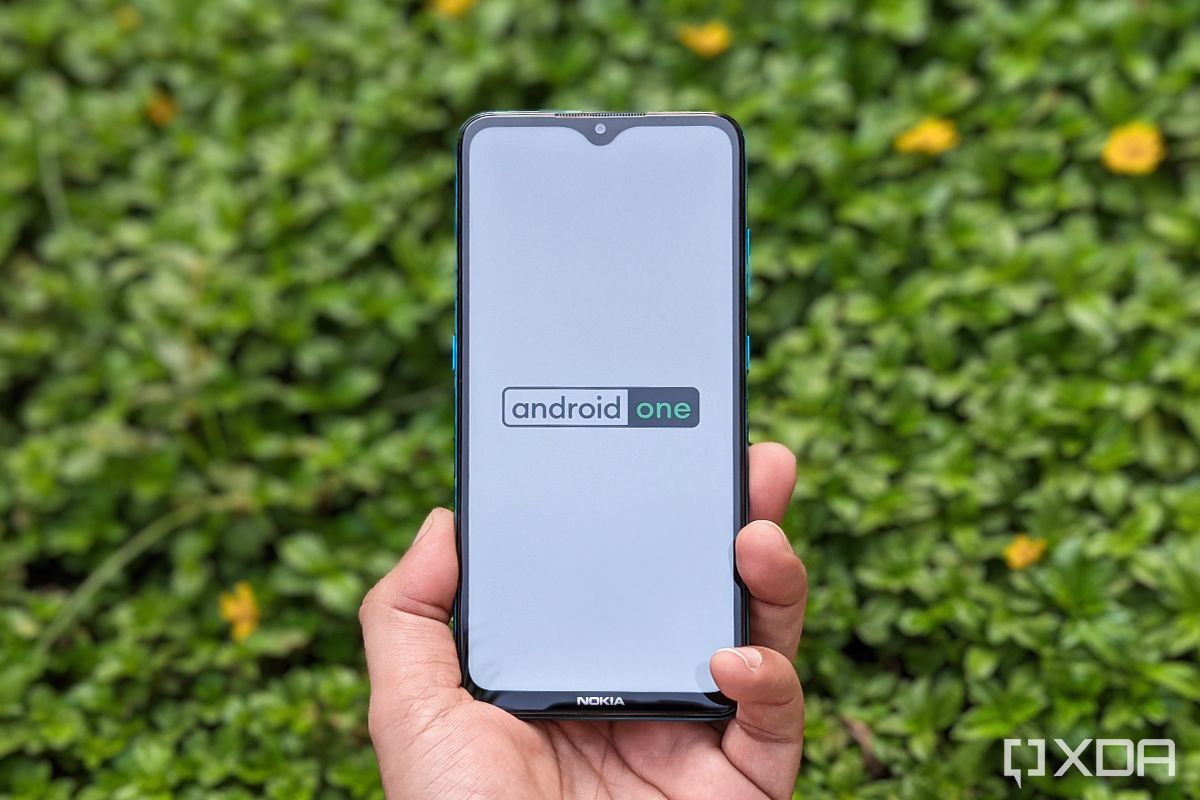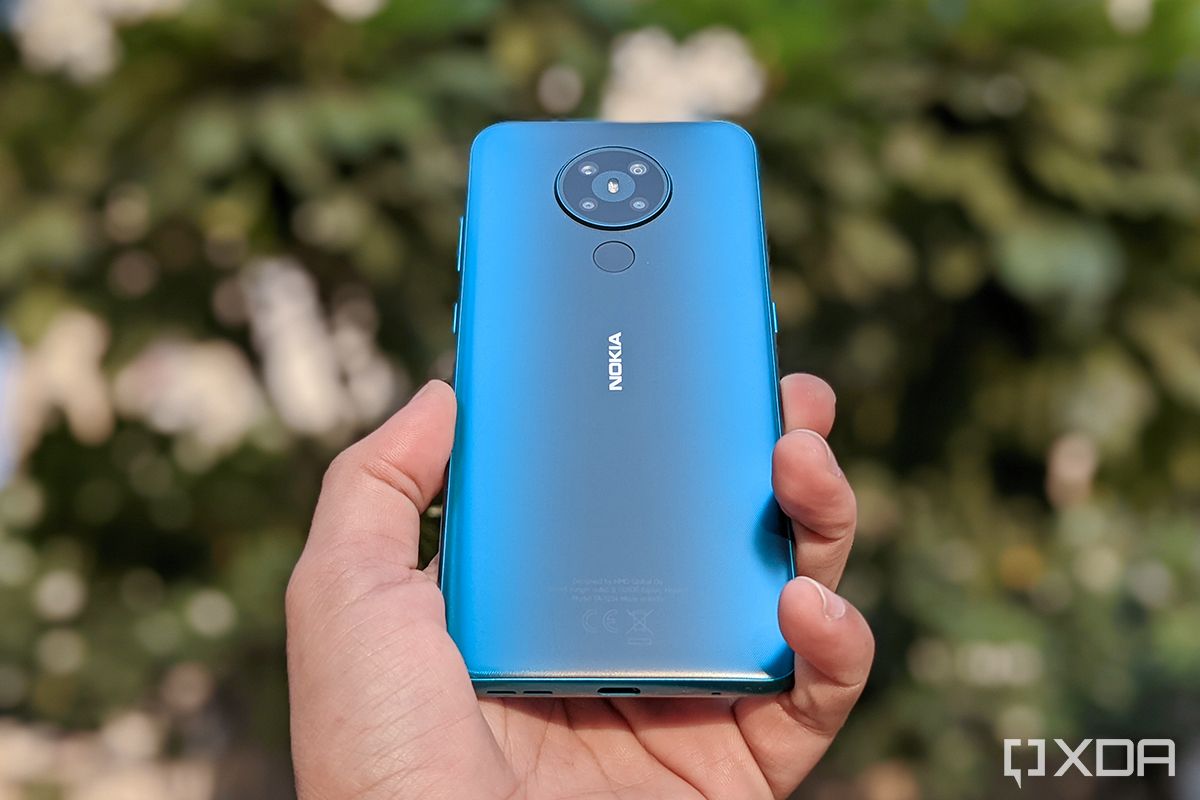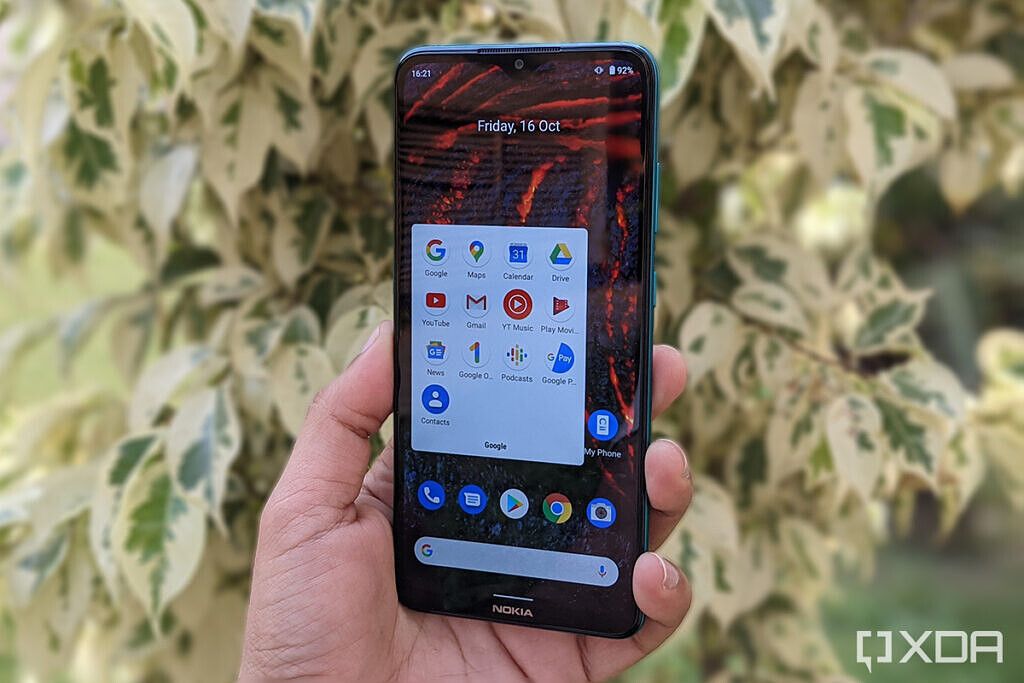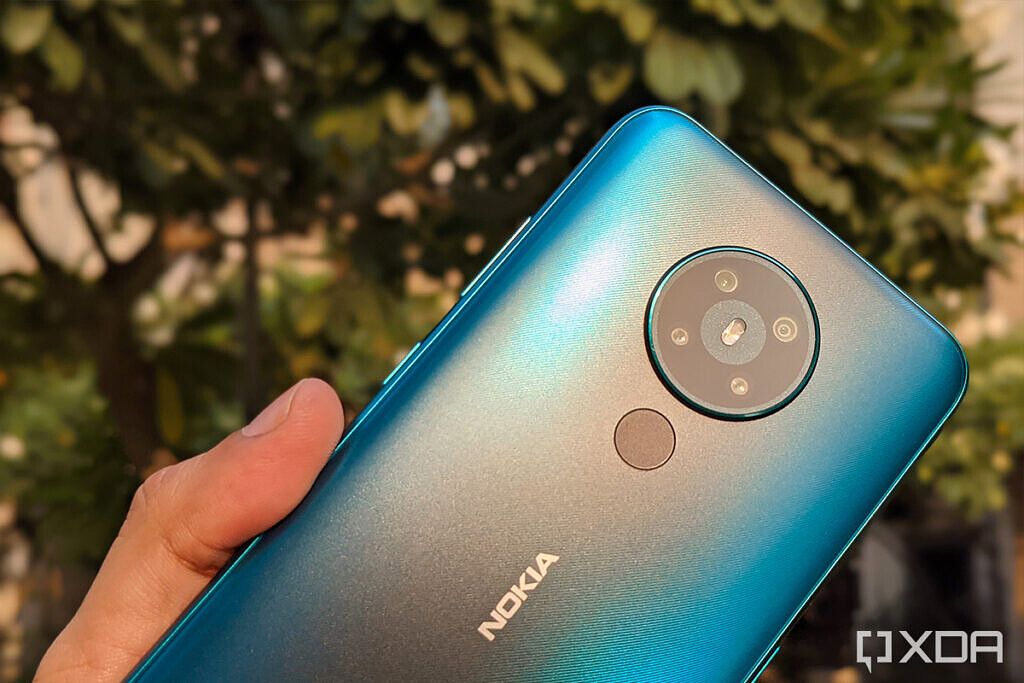The Nokia 5.3, one of the first smartphone announcements delayed because of COVID-19, follows in the same footsteps of other Nokia-branded devices launched after 2016. It offers a relatively pure Android software experience as a result of HMD Global's commitment to Google's Android One program. More recently, the Nokia 5.3 was launched in India, where smartphone companies often employ a nasty method to make smartphones more affordable — serving obnoxious ads in system apps. HMD Global's smartphones, though, offer a unique proposition to users; the Nokia 5.3, for instance, brings a bloatware-free, ad-free Android experience at a price of ₹13,999, alongside a software update promise that extends much longer than smartphones in the same price bracket.
In December 2016, the Nokia brand name reemerged in the smartphone market after over two years of hiatus. This hiatus was a result of Microsoft acquiring Nokia's phone business — what was once the world's largest phone-related entity — in 2014, and eventually liquidating it. These events were a result of bad choices by the company's leadership, perhaps the worst of which was the choice to stick with Windows Mobile as the preferred operating system when the rest of the industry gravitated towards Android. When it came time to revive the Nokia brand for the Finnish startup HMD Global, which was made up of former employees in Nokia's mobile arm, the decision was clear and univocal. They weren't going to — yet again — ignore the massive force that Android had become!
HMD Global committed to shipping devices under Google's Android One program a year after they brought the Nokia smartphone brand back into the market. The key devices that mark their entry into the Android One club include the Nokia 6 (2018) and the Nokia 7 Plus. Since then, the Nokia brand has remained aligned with the pure Android experience as one of the largest brands to be associated with Google and the Android One branding. With guaranteed Android version updates for the next two years and security updates for an additional year on top of that, the Nokia 5.3 guarantees long-lasting software support.
Before going into more detail on why that is important, here's a look at what the Nokia 5.3 offers in terms of specifications:
How Android One sets the Nokia 5.3 apart
The beauty of Android being an open-source OS lies in the fact that you can experience it in different flavors. There are a variety of custom Android software experiences available in the market, and some of the most commonly known ones include Xiaomi's MIUI, OnePlus's OxygenOS, Samsung's One UI, OPPO's ColorOS, Huawei's EMUI, and so on. Each of these custom Android builds add distinct components and features, both visually as well as functionally. But at the same time, a relatively undervalued flavor of Android is what is commonly known as vanilla, or stock Android.
Simply put, stock Android, as users commonly refer to it, is generally considered the barebones version of Android with little to no visual changes from the AOSP (Android Open Source Project) code, along with some basic apps like Gmail, Photos, Maps, YouTube, etc. from Google. Unlike Android builds that are extensively personalized by OEMs, the stock Android user interface remains unchanged from how Google intended it. While the set of pre-installed apps may vary based on the manufacturer, a stock Android UI is nearly visually identical to how Google designs Android for its own Pixel smartphones.
The user interface on smartphones under Google's Android One program is essentially stock Android with a set of apps, as per Google's conditions and recommendations. Instead of developing their own user interface based on the open-source version of Android, certain manufacturers collaborate with Google to simply optimize the user experience for the hardware.
These apps may be complemented by some utility applications that fit the bill for a clean software experience. HMD Global's Nokia 5.3, which is part of the Android One program, also offers the same clean experience that we've just been discussing.
Clean software experience without bloatware
In price-sensitive markets such as India, many smartphone manufacturers compete to offer the best hardware specifications at the lowest prices. These brands then recover these costs through software partnerships by pre-installing third-party applications and services on smartphones. The pre-installed third-party apps are — in a way — both advertisements and points-of-sale for any particular app or service.
Pre-installed bloatware on premium Xiaomi and OPPO devices as compared to zero third-party apps or bloatware on Nokia 5.3's Android One UI
Users in the lower price brackets, especially in developing countries, often lack the technical skill required for deleting these apps and end up being users of these apps. Even though users may enjoy these apps and services, there are underlying concerns citing lack of privacy for user data or the trustworthiness of these apps.
Left-to-right: System apps in MIUI, app install recommendations in MIUI, and suggestive push notification ads in Samsung's One UI
HMD Global's commitment to providing a clean software experience means, for the most part, that they're omitting the pre-installation of any third-party apps. The opinions about this approach may vary — while some users prefer having loads of pre-installed apps on their devices, some like to start with a clean slate. But from the standpoint of data security, a clean user interface reduces the scope of any app jeopardizing user data.
Besides protecting users' data, Android One devices are also required to get security patches routinely. The promise of periodical security updates ensures that smartphones are guarded against the latest security vulnerabilities.
Two years of Android updates guaranteed
As part of the Android One requirements outlined by Google, a manufacturer must provide a guarantee of at least three years of security updates. At the same time, smartphones certified for Android One must also receive at least two years of Android version updates.
HMD Global has lived up to this expectation and has delivered timely updates to its smartphones across different price segments. Recently, they rolled out the Android 10 updates for Nokia 3.1 and Nokia 5.1. Both of these phones were launched in mid-2018 and shipped with Android 8.1 Oreo pre-installed. That makes Android 10 their second major OS update. Notably, the Nokia 3.1 —the more affordable option out of the two — is among the few entry-level smartphones from 2018 to get a taste of Android 10.
HMD Global recently also announced its timeline for the Android 11 release, and the announcement includes premium devices such as the Nokia 8.1 and the Nokia 9 Pureview, mid-rangers such as the Nokia 7.2 and the Nokia 6.2, and even entry-level devices such as the Nokia 2.2. All of the smartphones hit the market running Android 9 Pie, so that means Android 11 will be their second OS update.
Few smartphone manufacturers reach the same level of support as HMD Global—OnePlus and Google do, for instance, though they maintain far fewer devices. While Google promises three OS updates on Pixel devices, OnePlus has pushed out up to three consecutive updates to its smartphones including the OnePlus 3/3T and the OnePlus 5/5T which have been updated to Android 9 Pie and Android 10, respectively.
It's worth noting that Google and OnePlus have always targeted the premium (or quasi-premium) segment with their smartphones. HMD Global, on the other hand, has been able to keep devices, especially in the lower and mid-range segments, up-to-date for relatively longer than other manufacturers competing in similar price brackets.
Android One offers a Pixel-lite experience but at a much lower price
The Android One program was originally designed to offer a clean Android experience on low-end devices, especially for markets like Southeast Asia and Africa. It evolved significantly to rope in several manufacturers like Japan's Sharp, which released the Aquos 507SH with decent mid-range specifications. In 2017, Google partnered with Motorola to announce the Moto X4 Android One Edition powered by Google Fi in the U.S., paving way for brands like Xiaomi and HMD Global to jump on the bandwagon. While the rest of the brands have seemingly pulled the plug on (or neglected) their partnerships, HMD Global is still wholly committed to Android One.
Devices like the Nokia 5.3 enjoy certain benefits apart from Google's assistance for software that other smartphones may not enjoy. Besides a user interface emulating Google's Pixel smartphones, Android One devices also benefit when it comes to receiving features from Pixel smartphones before any other device. Google's Call Screen, a feature that lets Google Assistant talk to callers on your behalf, was rolled out exclusively to select Android One devices last year.
"Pure" may not be the "best" Android experience
While this article has mostly highlighted why the Nokia 5.3's Android experience is closest to what Google intends for users to experience, we do not — in any way — suggest that that "pure" Android experience is also the "best" one. Android's open-source nature allows different manufacturers to serve different custom experiences to their users. Most often, these custom user experiences become the selling point for companies, even crucial to their identities. Besides visual enhancements, brands also add their own features or replace Google's apps with more feature-rich versions in a bid to secure a consumer's loyalty. In certain use cases, this can go beyond marketing and actually mean that the user gets better features than on stock Android, leading to a quite evident consumer stickiness.
Stock Android, on the other hand, is not exclusive to a brand, and that frees users from the obligation of sticking to a familiar one. They can use smartphones from different brands — like HMD Global, Motorola, Google, ASUS, etc. — without any significant learning curve.
Overall, different flavors of Android offer some unique characteristics to attract and hook users. Stock Android, and more specifically Android One, does that by ensuring a bloat-free interface, some of Google's Pixel software features before a wider roll-out, and guaranteed delivery of at least two generations of Android versions.
Nokia 5.3: Bound to outlast the competition
The Nokia 5.3 is understandably pricier than other smartphones in India running on similar hardware. The competition at its ₹13,999 price point includes the Redmi Note 9 Pro, POCO M2 Pro, Realme Narzo 20 Pro, the Samsung Galaxy M21, and others. Each phone has a definitive advantage over the Nokia 5.3 when it comes to hardware — the Redmi and POCO phones feature a more powerful processor, the Narzo features faster charging and a 90Hz display, and Galaxy M21 offers a larger 6000mAh battery with an AMOLED display.
Metaphors about sprints and marathons aside, none of these phones offer the software experience and update guarantee that HMD Global offers for the Nokia 5.3, making it an excellent choice for any user seeking longer use of their phone.
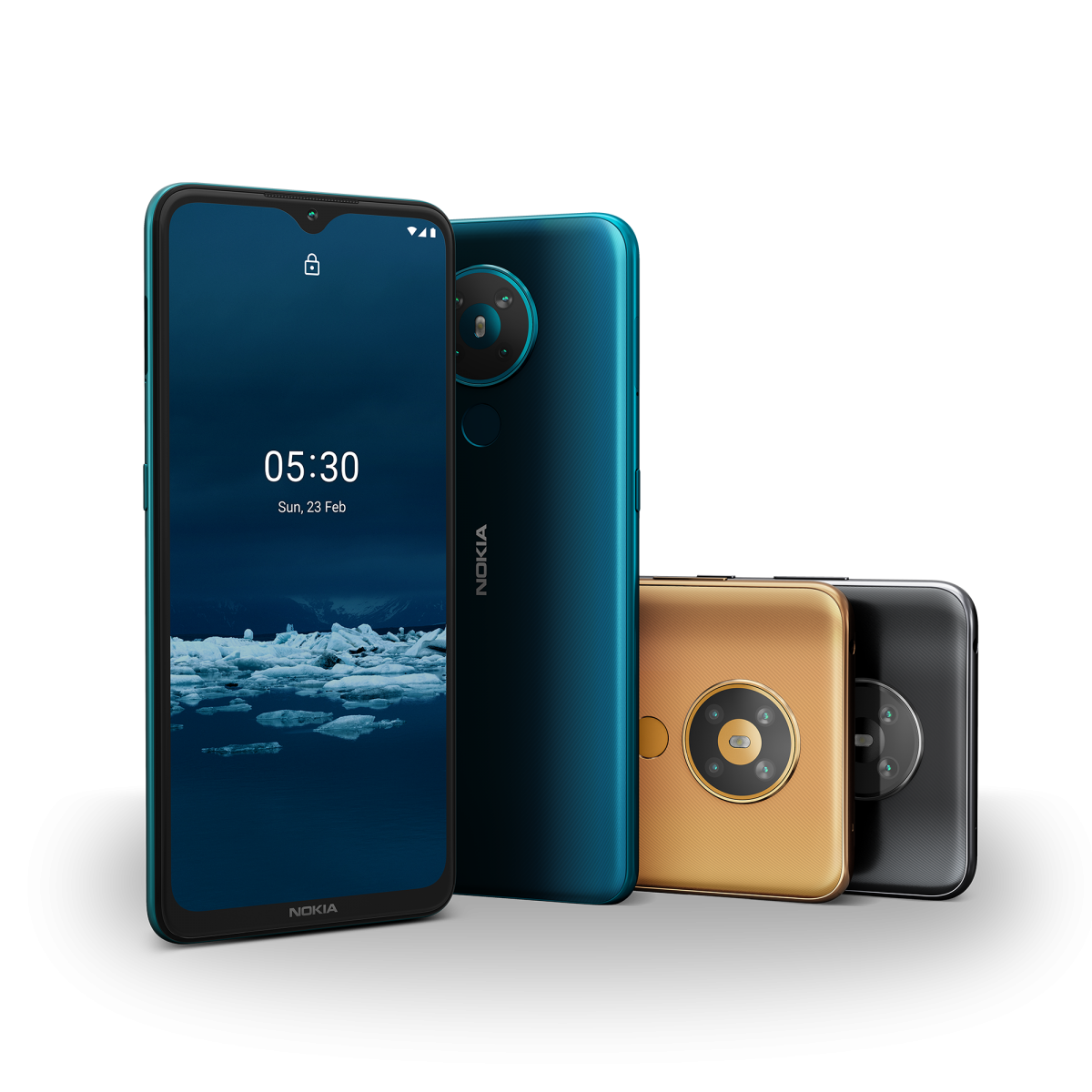
Nokia 5.3
The Nokia 5.3 promises a clean and bloat-free Android experience, a rarity in this price bracket.

